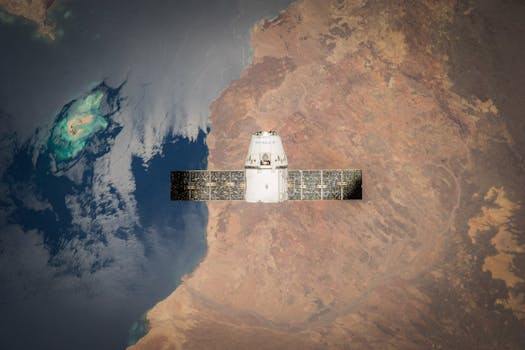From Ground to Sky: The Evolution of Satellite Telecommunications Technology – Satellite

From Ground to Sky: The Evolution of Satellite Telecommunications Technology – Satellite
Satellite Telecommunications technology has undergone significant transformations since its inception. The concept of using satellites for communication purposes was first introduced in the 1940s, but it wasn’t until the 1960s that the first commercial satellite communications systems were launched. The evolution of satellite telecommunications technology has been a remarkable journey, marked by numerous breakthroughs and innovations.
The first satellite, Sputnik, was launched in 1957, and it marked the beginning of the space age. However, it was the launch of the first commercial communications satellite, Intelsat 1, in 1965 that paved the way for modern satellite telecommunications. This satellite was capable of transmitting signals across the Atlantic Ocean, connecting North America and Europe. The success of Intelsat 1 led to the development of more advanced satellites, such as Intelsat 2 and Intelsat 3, which expanded the coverage area and increased the capacity of satellite communications.
Early Years of Satellite Telecommunications

The early years of satellite telecommunications were marked by the development of new technologies, such as the introduction of geostationary satellites. Geostationary satellites, which orbit the Earth at an altitude of approximately 36,000 kilometers, revolutionized satellite communications by providing a fixed point in the sky from which signals could be transmitted and received. This innovation enabled the establishment of permanent connections between different parts of the world, making it possible to transmit data, voice, and video signals in real-time.
The 1970s and 1980s saw significant advancements in satellite telecommunications technology, with the introduction of new satellite systems, such as the Domestic Communications Satellite (DCS) system in the United States. The DCS system provided satellite-based communications services to rural and remote areas, where traditional telecommunications infrastructure was lacking. This expansion of satellite telecommunications services helped to bridge the gap between urban and rural areas, providing equal access to communication services for people living in remote and underserved regions.
Modern Satellite Telecommunications Technology

Today, satellite telecommunications technology is more advanced than ever before. The development of new satellite systems, such as high-throughput satellites (HTS), has increased the capacity and speed of satellite communications. HTS satellites use advanced technologies, such as spot beams and frequency reuse, to provide higher data rates and greater connectivity. These advancements have enabled the widespread adoption of satellite-based services, such as broadband internet, television broadcasting, and mobile communications.
The use of satellite telecommunications technology has also become more diversified, with applications in fields such as navigation, remote sensing, and earth observation. The Global Positioning System (GPS), which relies on a network of satellites orbiting the Earth, provides location information and timing signals to GPS receivers on the ground. Remote sensing satellites, such as those used for weather forecasting and environmental monitoring, collect data about the Earth’s surface and atmosphere, providing valuable insights for scientists and policymakers.
Future of Satellite Telecommunications Technology

The future of satellite telecommunications technology looks promising, with ongoing research and development focused on improving the performance, capacity, and affordability of satellite-based services. The emergence of new technologies, such as satellite constellations and 5G networks, is expected to further transform the satellite telecommunications industry. Satellite constellations, which involve the deployment of large numbers of small satellites in low Earth orbit, promise to provide global coverage and high-speed connectivity. The integration of satellite communications with 5G networks will enable the creation of hybrid networks, providing seamless and ubiquitous connectivity to users around the world.
In conclusion, the evolution of satellite telecommunications technology has been a remarkable journey, marked by numerous breakthroughs and innovations. From its humble beginnings to the current state-of-the-art technology, satellite telecommunications have come a long way. As the demand for satellite-based services continues to grow, driven by the increasing need for global connectivity and access to information, the future of satellite telecommunications technology looks bright.
See more:





